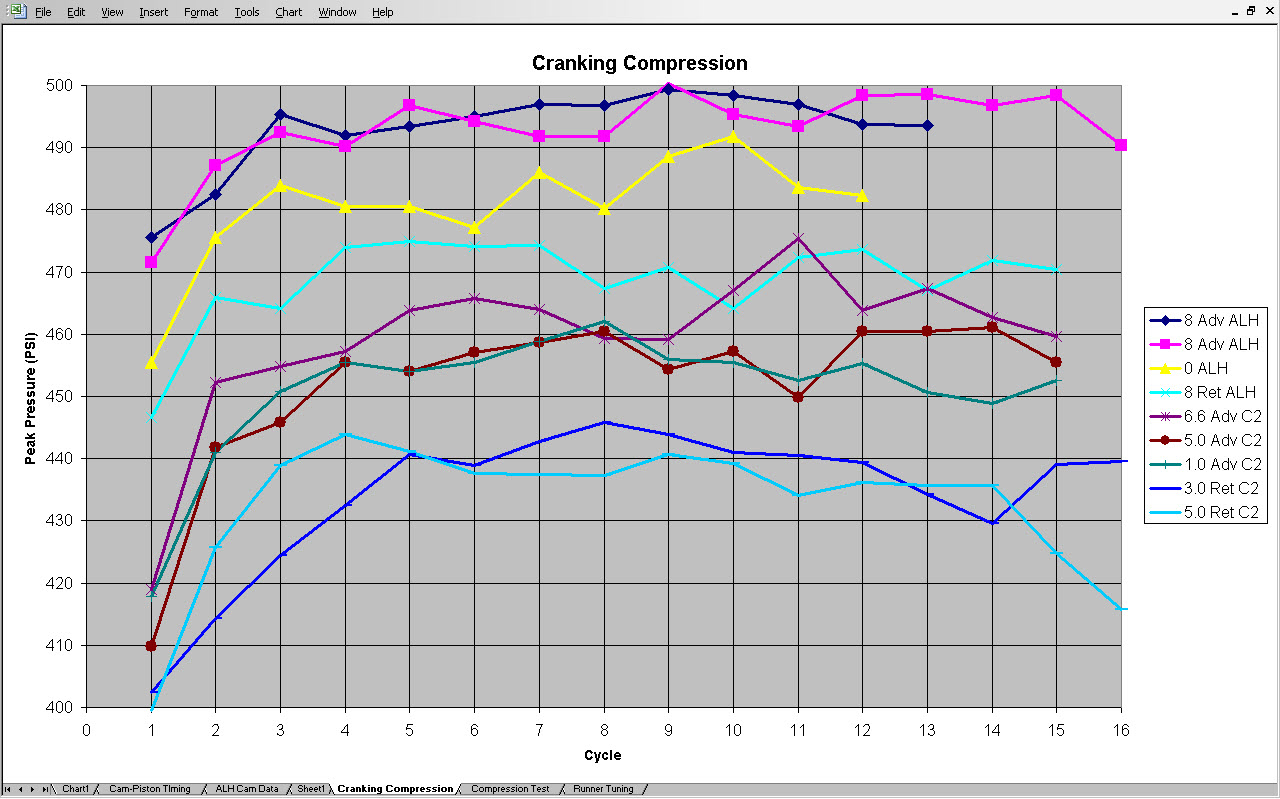I had some more time to play with cam timing this weekend. I took my $30 Harbor Freight compression gauge kit, removed the hose and gauge and put a 1000 psi pressure sensor on it. This reduces the additional volume that gets added to the combustion chamber by a LOT. I used the same data acquisition system that I used for taking intake and exhaust pressure measurements, put a 1000 psi sensor on it, cranked the sample rate up to 1kHz and took cranking compression data with this instead of the typical dial gauge. The advantages of this are that you can save data, review it later, evaluate rise rates, first stroke compression, leak down, etc.
I've been curious about the effect of cam timing on performance in TDI's. Part of the reason for measuring an ALH cam profile and calculating valve to piston clearances is to know how far the cam can be advanced/retarted before valve to piston contact.
In my recently rebuilt engine, I measured piston valve relief depth, piston protrusion from the block and valve protrusion from the cylinder head. This paired with the cam profile and a very accurate TDC mark, gives me the ability to pretty accurately know how far I can go before getting into trouble.
Generally speaking, advancing the cam should bring the powerband down in the RPM band. Focusing in on this detail a bit more, I theorized that advancing the cam should raise the cranking compression. With the intake valve not closing until 50+ crank degrees after the start of the compression stroke, there is likely quite a bit of reversion at cranking speeds and advancing the cam should show up with higher cranking compression.
I tested 0.00, 2.66, 5.33, 8.00, 10.66 degrees advance (this corresponds to 1, 2, 3 & 4 flywheel teeth). Below are the results of this testing.
The 10.66 degree advance (4 teeth) is a bit of an anomoly (in the opposite direction of the theory) during the first few cycles, but catches up and ends up highest at the later cycles.
The rest of the conditions are more/less the same and didn't show any significant difference in cranking compression.
Once done with this experiment, I set the advance at 8 degrees (3 teeth) and drove it. I'll leave it at this setting for a while, but in the ~250 miles I've driven it this way, it has noticably quicker response/spool up and feels a bit "snappier" in the lower RPM range (1500-2500 RPM). The cruise control does not seem to work as hard (undershoot/overshoot) with this timing. EGT's are higher - probably 100F or so. Maybe a bit less smoke as well.
I went back and repeated 0 and 3 teeth settings and the test did not repeat well for some reason.
The significant drop in pressure between cycles makes me think there is some delay in the check valve closing on the glow plug adapter. This could also be causing the difference in readings as it seems to have some delay in opening as well with the spikes on the 2nd and 3rd, etc cycles.
So, this may all be somewhat garbage data. If I do this again, I think I'll take the check valve out of the adapter and just get cylinder pressure up/down each cycle. With the reduced volume with the pressure sensor it will be relatively close to actual cylinder pressure and might do a better job of identifying differences of cam timing.
I'm not sure if this has any value at this point or not. Ideas, comments, suggestions, etc are welcomed.
Thanks for reading





